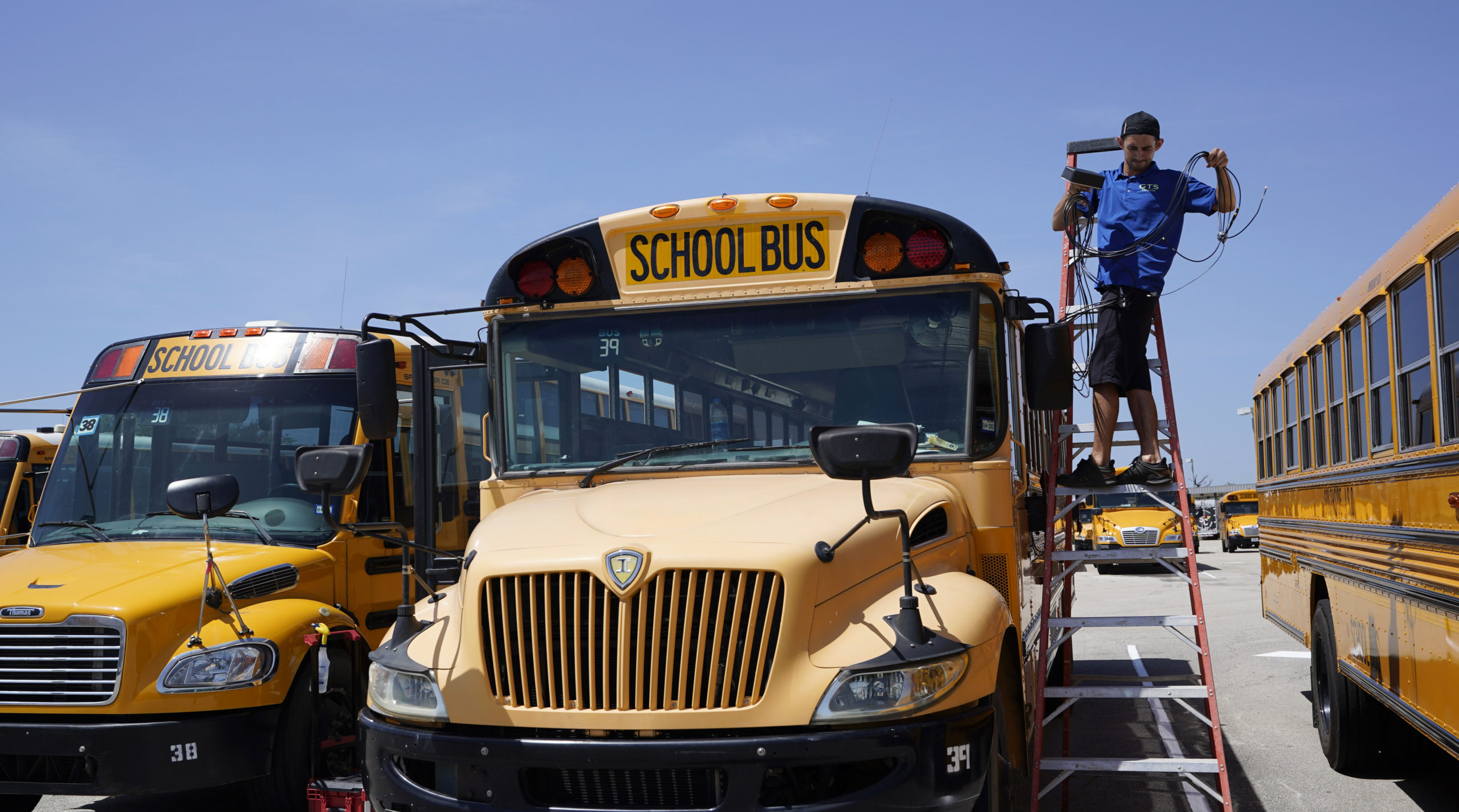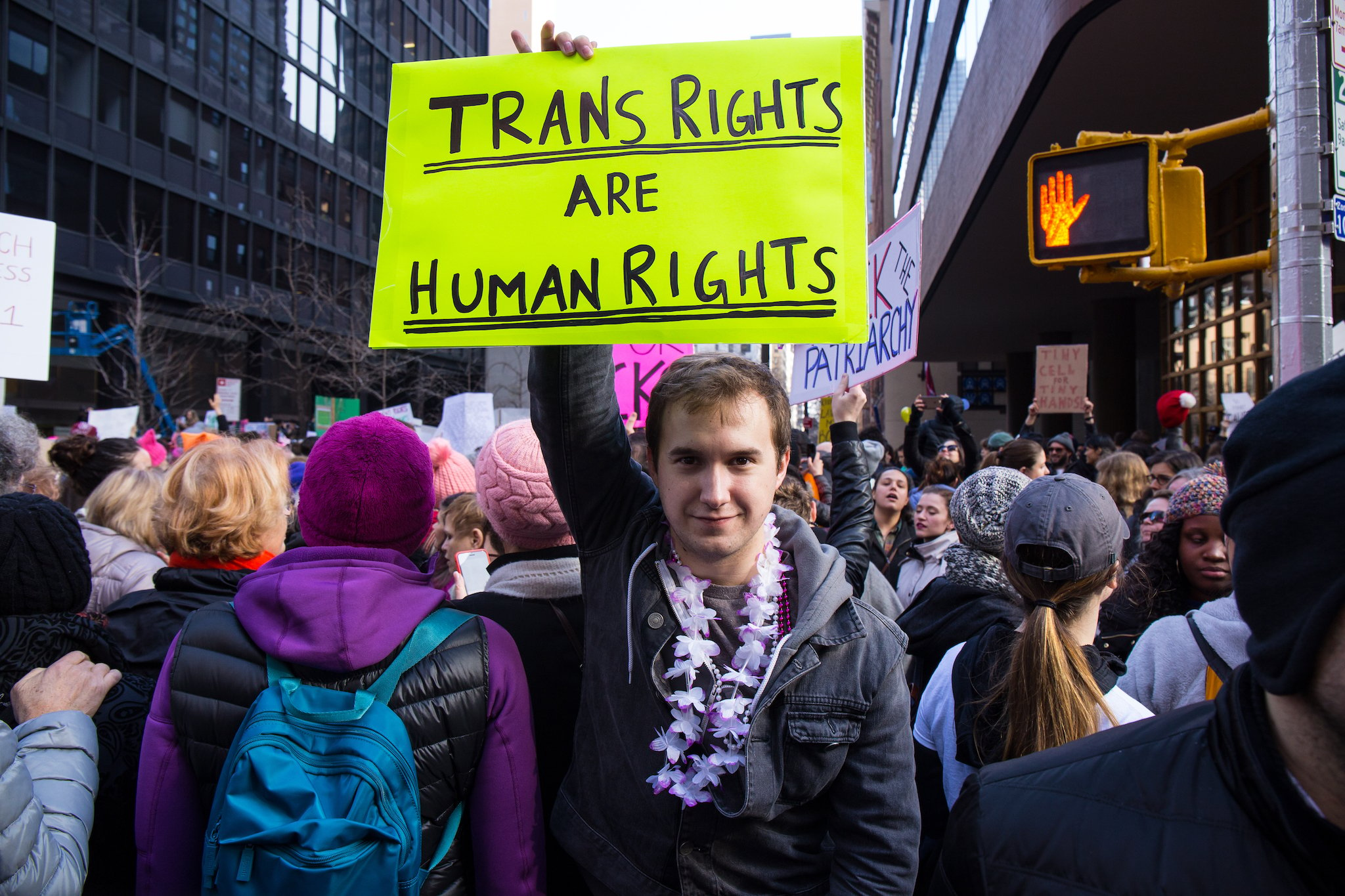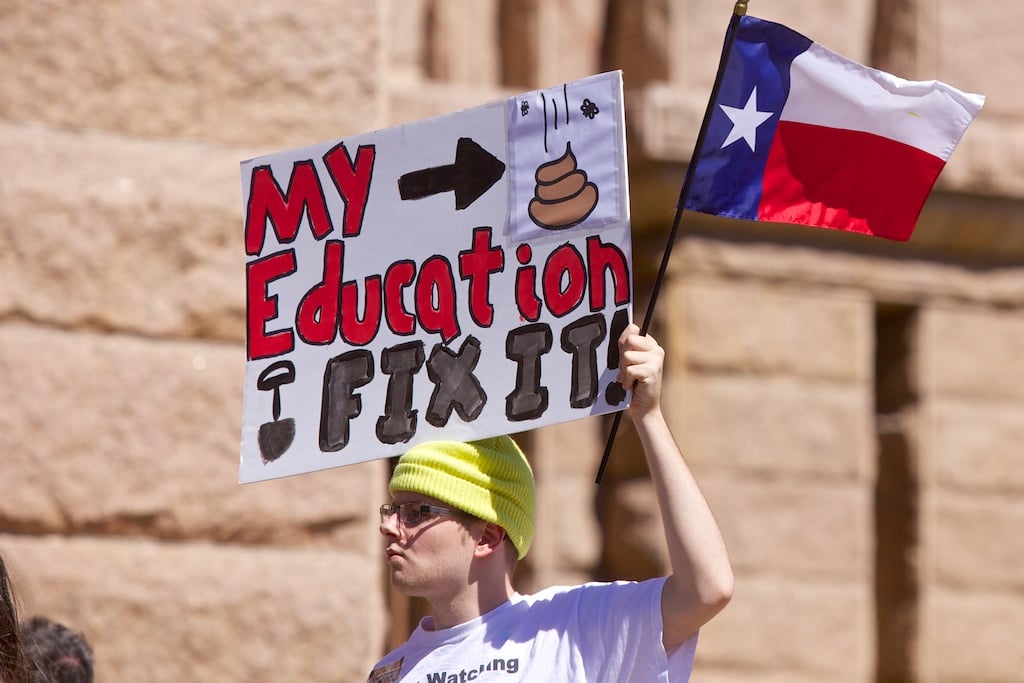
Texas Has the Widest Digital Divide in the Nation. What Does that Mean for the School Year?
As schools reopen, some families face potentially life-threatening options.

Above: In San Antonio, Spencer Hollers works to equip Southside Independent School District buses with wifi in August.
Before COVID-19, Jeanette Mathews was a single mother who relied on her son’s school schedule to help balance two jobs. In the mornings, the Mississippi transplant worked at a bustling restaurant in downtown Austin. In the afternoons, she served at a second restaurant while her son attended afterschool care and football practice. But the week her downtown job closed due to the pandemic, Austin Independent School District (AISD) schools also shut down, forcing her son into a virtual classroom.
“I just instantly panicked because I already knew, there would be no more school,” Mathews says. “And then there’s a possibility there’s no job for me.”
With the loss of her afternoon job, Mathews could no longer afford phone service—the only way she could reliably access the internet. Without service, her son struggled to attend school remotely.
Texas has the widest digital divide in the nation, and Mathews’ son is one of the 1.8 million public school students in Texas that lack necessary broadband access. As schools across the state begin a staggered remote start, some families have been forced to choose between sending their children for in-person learning or stretching their own resources for virtual learning.
Since March, the Texas Education Agency (TEA) and Texas school districts have poured nearly $1 billion into closing the connectivity gap. In May, TEA announced Operation Connectivity, a program that aims to provide internet access and digital devices to districts across the state and ensure that every student has access to a hotspot, laptop, Chromebook, or iPad. Yet a TEA representative said the bulk order of 1 million devices was not placed until early August, possibly leaving countless students without adequate remote learning technology for the first few weeks of school.
Melody Parish, the deputy commissioner of technology for TEA, says data for Operation Connectivity is sourced from the U.S. Census, Connected Nation, a national nonprofit organization aimed at closing the digital divide, and surveys from individual school districts in Texas which found that one-third of students do not have reliable technology for learning.
But neither the districts nor TEA have precise data on which families lack access. TEA relies on school districts, or Local Education Agencies (LEAs), for clarity on where exactly the connectivity gap is.
“Each LEA had their different methodology for collecting the data, some of it through technology assessment as part of their registration,” says Julia Schacherl, a staff member at TEA. “Others did it on a web-based survey that they sent to families and then others did direct outreach to families.”
But that strategy has not proven to be completely successful. Throughout Texas, community organizers, teachers, and academic experts say that families are falling through the cracks and being forced to make potentially life-threatening decisions in order to educate their children. The most vulnerable, they say, are Black and Latinx students whose communities have been disproportionately impacted by the virus.
“I’m still scared for my son’s life,” says Mathews, who lost both an aunt and uncle to the virus in July. “I do feel like they learn better in person, but with COVID-19 out there, online is the option we have right now.”
Mathews says she applied for one of the thousands of Chromebooks distributed by AISD but never heard back. Without a device, she could not access the hotspots sent out by the county.
As school shifted to remote learning, districts across the state rushed to outfit school buses with Wifi hotspots as a safe means to provide internet access during the pandemic. As the semester continued, TEA set guidelines on remote learning requirements for continued state funding.
Kevin Schwartz, Austin Independent School District’s technology officer, says Wifi-equipped school buses are sent to highly dense neighborhoods, where bus drivers sit for the length of the school day to ensure social distancing guidelines are followed. Buses have also been used to deliver around 15,000 Chromebooks to families in what the district describes as a “pizza-style delivery.” Drivers knock on residential doors, place devices on the ground, and then confirm delivery has been made from a distance.
Schwartz says that the Austin school district has been sending buses to economically disadvantaged students due to the high correlation between income and internet access, while also relying on first-hand accounts from bus drivers.
“We’re using a system in a way that it wasn’t designed to be used. We don’t have the number of students. We sort of have data rates and stories,” Schwartz says about tracking the number of families receiving hotspots. “I know that we ran more than 120 buses and we moved them in response to need. So we know we’re serving students.” In the spring, Austin ISD installed 7,000 hotspots between buses and has ordered an additional 10,000 hotspots for the fall.
“It’s really hard to get people to tell you they don’t have [an] internet connection when they can’t use the internet to respond to a survey or send an email,” says Schwartz. “What we’ve got is based on national data and we’ve modified that based on what we know in Austin and from those who talk to our communities.”
TEA projects that 45 percent of devices ordered will be in students’ hands by October 1 and expects their bulk order to be fully met by mid-to-late October. Parish says that while no concrete plan to track remaining gaps currently exists, a method to monitor the program’s success is underway.
“There is a plan to monitor the progress,” Parish says. “It’s just we’re working on what that plan looks like.”
Carlotta Garcia, an organizer affiliated with Central Texas Interfaith, says while families have been organizing to survive the pandemic—creating community food pantries and taking care of elderly and disabled neighbors—they often do not have the bandwidth to overcome the digital barrier.
“Families that are suffering from the digital divide are dealing with a lot,” says Garcia. “These are families dealing with life and death. Right now they’re dealing with food, medicine, sickness, and the threat of displacement.”
“I love what AISD did in their efforts to get buses out with hot spots, but having a kid come to a parking lot in their parents’ car is not equitable,” says Christina Collazo, founder of Tudos Juntos Learning Center, a organization aimed at helping Latinx parents and children maneuver the educational system. “It’s not fair and it’s not dignified.”
Even for families with internet access, the service can sometimes be so unreliable to render remote learning useless—a common problem in rural communities, where one in three rural Texans lack access to adequate broadband.
By 1 p.m. on the first day of school, Bastrop County senior Miranda Alcantar had already been booted out of four different classes on Google Classroom. An avid planner, she was used to the county’s unpredictable broadband connectivity. The previous semester, she had planned her days around finding internet access for classes, often driving to her older brother’s house in the Del Valle area for uninterrupted service.
“Sometimes my internet would just completely shut down and I would get taken out of my classes that I was in, and then I would miss some of the things that the teachers were saying,” Alacantar says. “Other times I would be struggling because my Wifi is so slow and some of my projects would get turned in really late.”
When her brother relocated during the summer, she realized she had to come up with a new plan. However, Bastrop County’s poor broadband connectivity provided few choices.
“Rural communities often don’t have near the funds or the resources as your more urban communities,” says Debbie Bresett, the executive director of Bastrop County Cares, a nonprofit organization dedicated to improving the lives of the county’s citizens. “I think the school districts are working as best they can to provide.”
Alcantar returned to school for in-person instruction on September 9 to avoid any further disruption to her education—a difficult decision with the nearly 1,600 confirmed coronavirus cases in the county, and one she says she may have not made if she had more options. Her parents worry for her safety, but encourage her to make her own decisions.
“My dad always talks about precautions,” says Alcantar. “He’s like, ‘I want you to be safe, Miranda. I want you to be healthy and I need you to be careful every time.’ And I’m like, ‘Yes Dad, I understand, thank you.’”
Read more from the Observer:
-
No Place to Be: In an election that will chart the state’s political future for a generation, Democrats are waging an unprecedented offensive against embattled Republicans.
-
Death in Dalhart: Cities have spent three decades criminalizing homelessness. Last year, Austin bucked the trend—and sparked a firestorm that still hasn’t gone out.
-
Conception Deception: An East Texas doctor who allegedly used his own sperm to impregnate patients remains in practice. Why has the Texas Medical Board let him keep his license?


